Truth matters. Community matters. Your support makes both possible. LAist is one of the few places where news remains independent and free from political and corporate influence. Stand up for truth and for LAist. Make your year-end tax-deductible gift now.
The Palisades’ historic Self-Realization Fellowship Lake Shrine reopens after the fires. A look at what’s changed

The Pacific Palisades’ Self-Realization Fellowship Lake Shrine, a sanctuary for spiritual seekers, has reopened to the public after a lengthy recovery and remediation process.
The Lake Shrine is tucked away off Sunset Boulevard near the Palisades coast and narrowly escaped being burned in the Palisades Fire in January. It reopened Wednesday, and the shrine’s leaders hope it can provide a sanctuary for the fire-ravaged neighborhood, along with any other visitors who stop by for the peace and quiet.
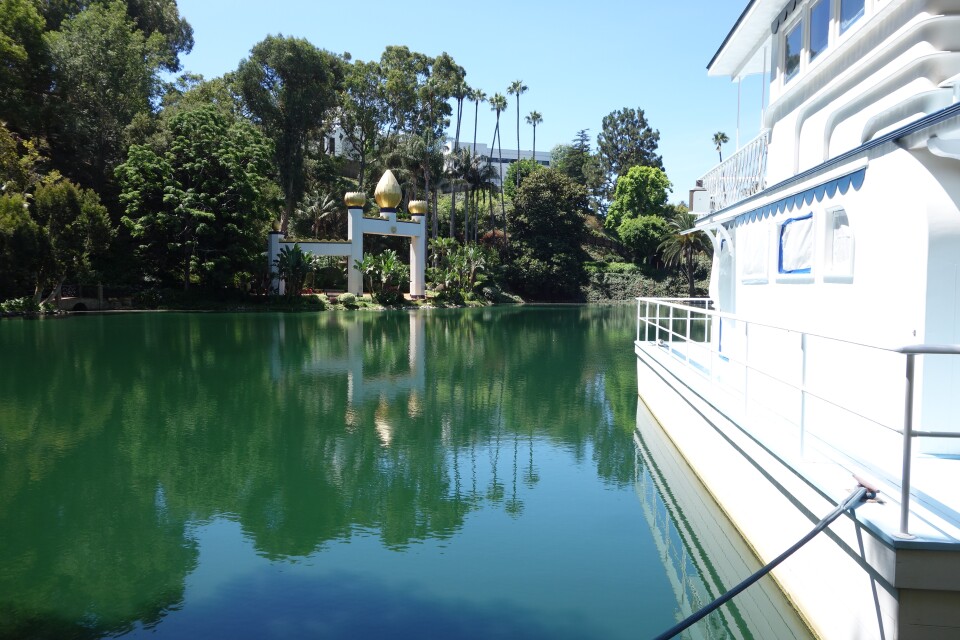
Saving the shrine
As it turns out, some foresight and a convenient water source are why the Lake Shrine managed to reopen just months after the devastating Palisades Fire. The shrine’s minister-in-charge Brother Satyananda told LAist that a new pumping system had been installed in advance of the fire.
“ We defended our own property here with our water from the lake, and it proved to be more effective than we ever imagined,” he said.
As the Palisades Fire raged on, volunteer firefighters affiliated with the shrine worked day and night to put out spot fires, even as hydrants failed to work due to water pressure issues and firefighters were dealing with unprecedented demand.
That firefighting process lasted about a week, Satyananda said. In the end, the shrine’s major historical assets were all saved.
But the Self-Realization Fellowship’s land didn’t make it out unscathed.
Some buildings used as dormitories were lost, including one where Brother Satyananda had slept, along with a Waldorf school on the fellowship’s property. Though those lots have been cleared, Satyananda said what the fellowship will do with them “still remains to be discussed and decided.”
Recovery and reopening
Visitors may notice the recovery still is a work in progress despite the reopening. Though the grounds and indoor spaces near the lake are open to the public, remediation work still has to be done on the shrine’s temple, perched higher up in the hills.
“There'll still be work going on in the background, but we'll have a nice quiet space for people to appreciate the value,” Satyananda said.
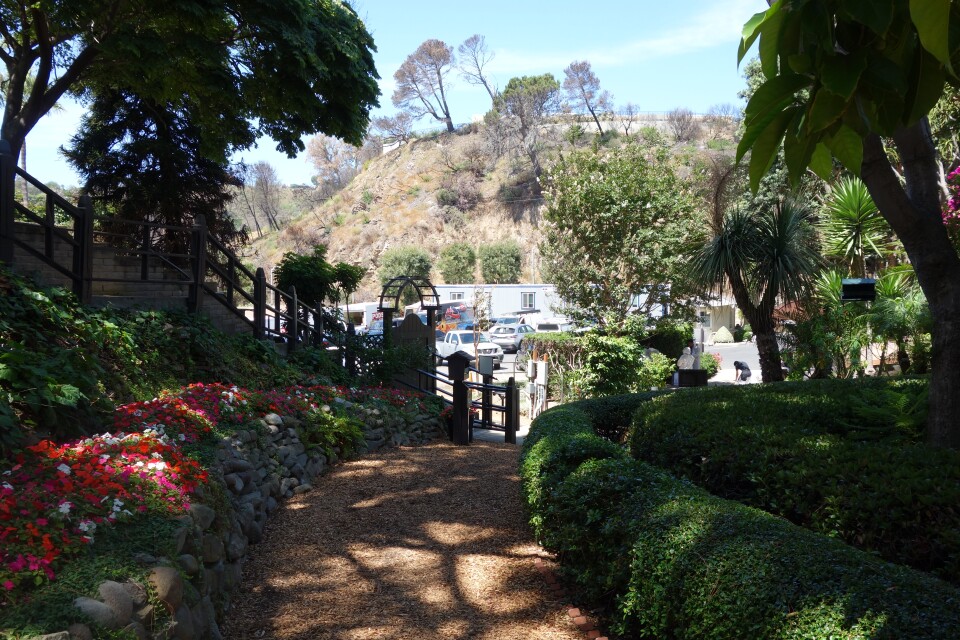
“Some of our neighbors have said when they come here, ‘Oh wow, it doesn't seem like any disaster ever happened here,’” Satyananda said.
The swans that call the lake home, named Shobha and Shanti, were nearly as quick to bounce back. They got blanketed with ash along with the rest of the lake, and Satyananda said their feathers were nearly black.
It took careful scrubbing to clean the swans, which was possible in large part because the swans knew and trusted the Lake Shrine’s ministers and staff, not to mention their stain-resistant feathers.
The shrine’s history
The site originally was a quarry used to extract building materials for roads in the early 1900s, before Los Angeles was anywhere close to the metropolis we know today. The mining stopped after workers hit the water table, which filled up the surrounding area and created the lake that you still can see today.
The lake passed through a number of hands, including some who developed the property for use as sets in the burgeoning film industry. You still can see a boat docked, and a Dutch-style windmill on the site has been repurposed into a chapel.
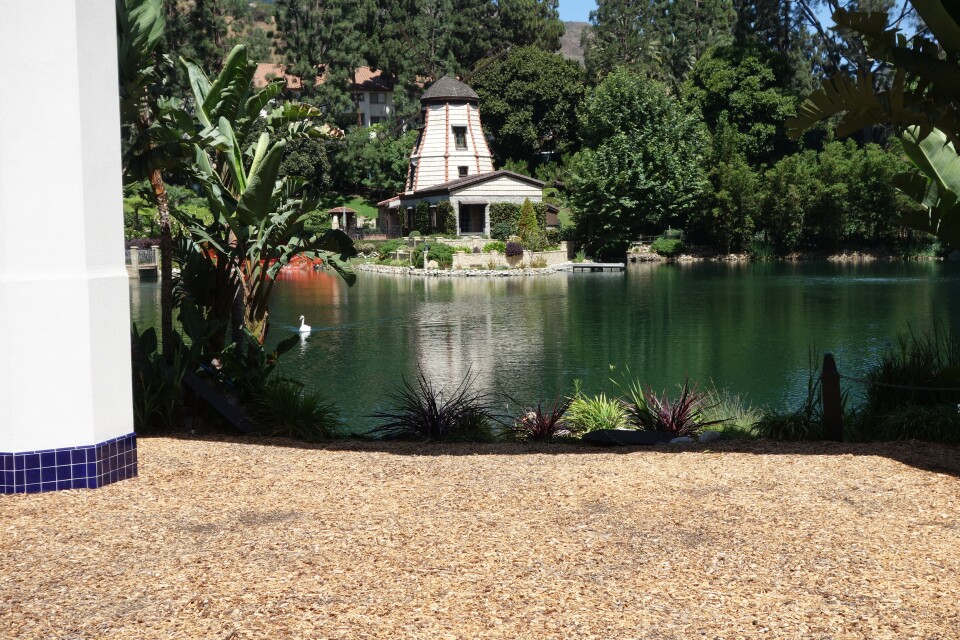
After the Self-Realization Fellowship acquired the land in 1950, it became a base for its founder, Paramahansa Yogananda, and his spiritual teachings. They proved very influential in California’s spiritual spheres throughout the 20th century. Yogananda is notable for embracing universal elements from all religions in his work: One of his best-known books is titled “The Yoga of Jesus.”
Yogananda’s influence lasted long after his death in 1952. The Self-Realization Fellowship’s Lake Shrine is just one of dozens of locations around the world, and some of the most influential figures in the world have counted themselves as devotees. Just one example: The late Apple cofounder Steve Jobs gifted copies of Yogananda’s autobiography to the people who attended his funeral, according to CNN.
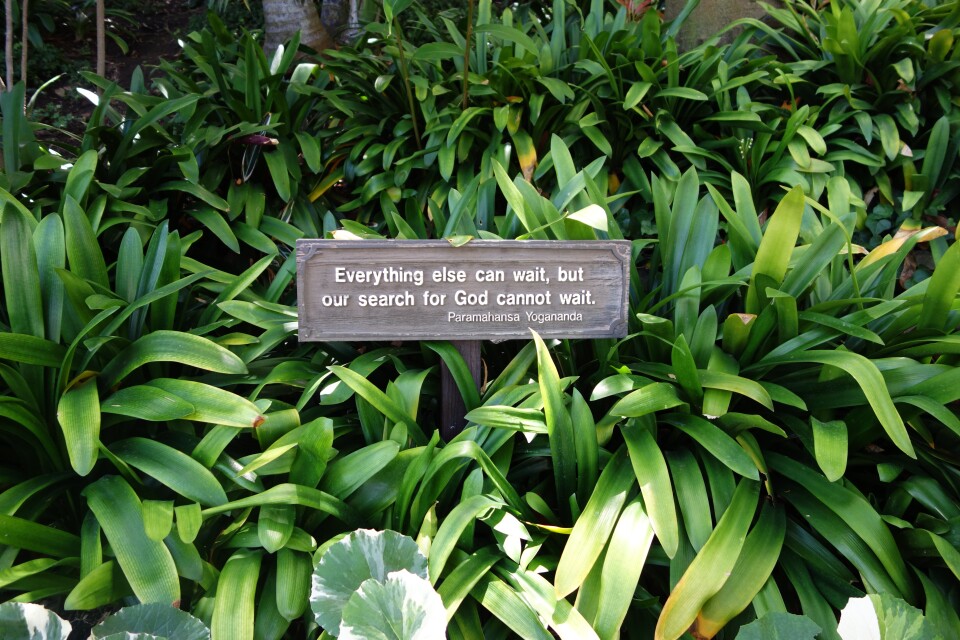
The Lake Shrine’s significance
In keeping with Yogananda’s beliefs, the shrine is interfaith — you’ll see quotations and markers representing major world religions as you walk around.
The path is circular, meant to inspire reflection on spiritual principles, and there are lots of stopping points for meditation. Satyananda, told LAist that some of the Shrine’s regular visitors have specific spots that they prefer to sit and meditate.
One of the stopping points along the way is the shrine’s Gandhi World Peace memorial, which has a 1,000-year-old sarcophagus that holds some of Mahatma Gandhi’s ashes. The Self-Realization Fellowship says they’re the only portion of his ashes outside India.
The ashes were sent to Yogananda because he was a close personal friend of Gandhi. Yogananda was also — fun fact — the driving force who brought yoga to Los Angeles (and the country).
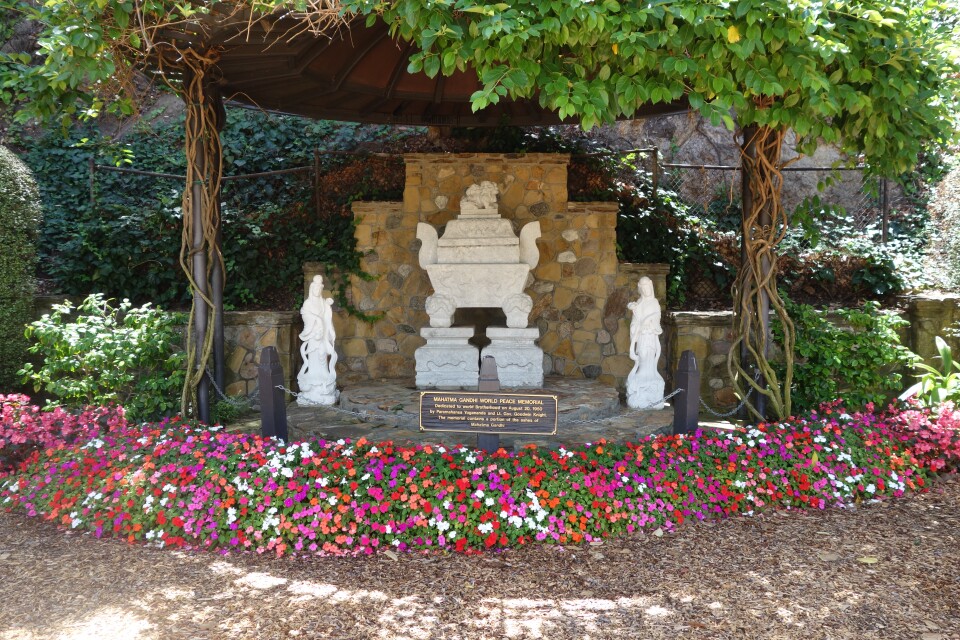
“ We see that in all different kinds of people, the location invokes kind of a natural reverence," Satyananda said. “In the East, meditating in front of a calm body of water is historically symbolic because there's the calmness of the surface, and as you sit quietly and gaze on it, it quiets the mind.”
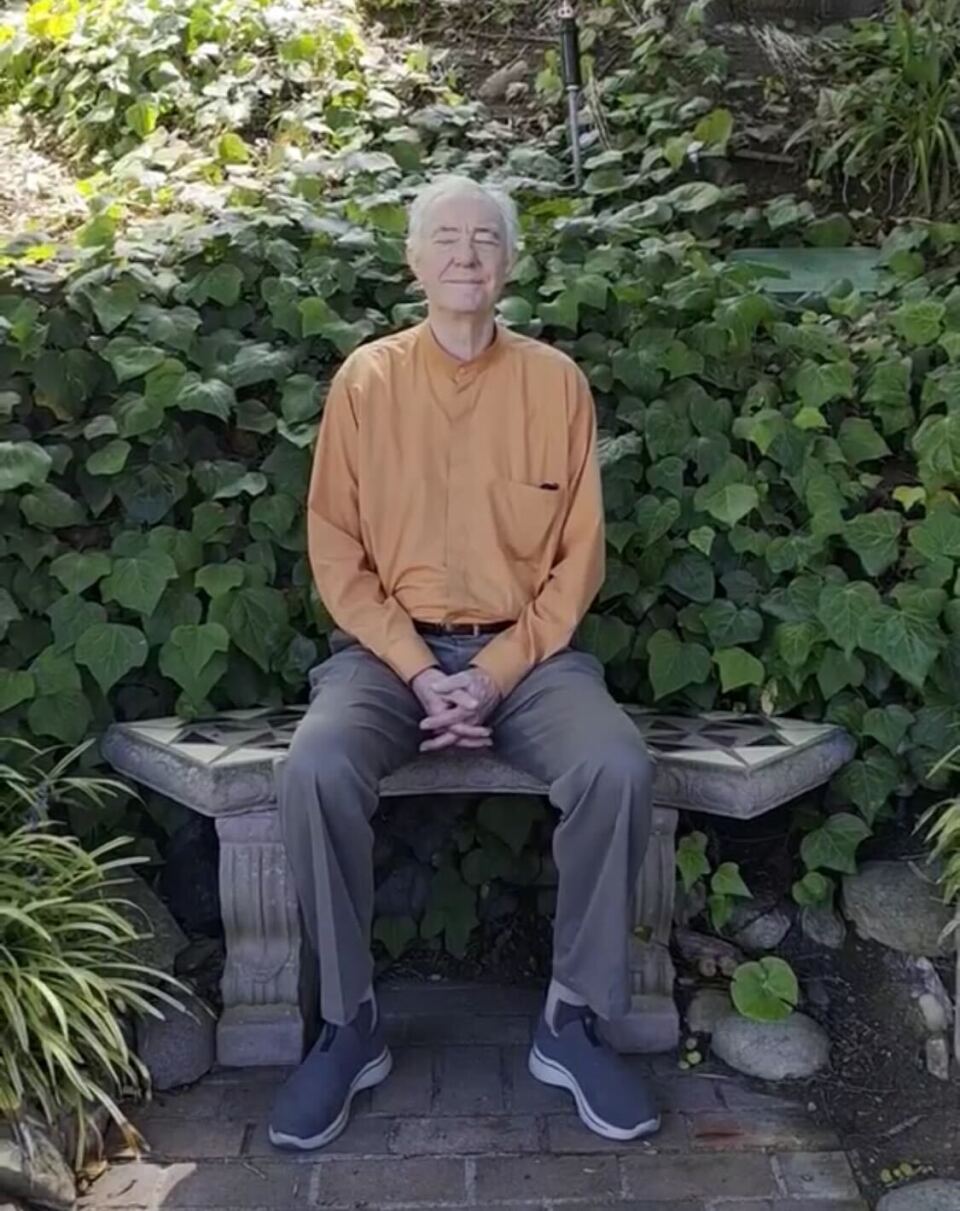
He hopes that by reopening the Lake Shrine, he can bring a measure of peace back to the fire-stricken neighborhood.
“I think everybody in the Palisades agrees that this is a time of change,” Satyananda said. “ What I'm seeing as a counselor is people that have been meditating, they have resilience and they tend to bounce back. There's the shock, there's the trauma, but they bounce back rather quickly.”
How to visit
The Self-Realization Fellowship Lake Shrine is now open from Wednesday through Sunday. Visitors have two options: A morning visit at 10 a.m. or an early afternoon visit at 1 p.m.
Advance registrations are required to visit.
Reservations open at 10 a.m. Saturdays for the week ahead. For more information, see the Lake Shrine’s website.
















